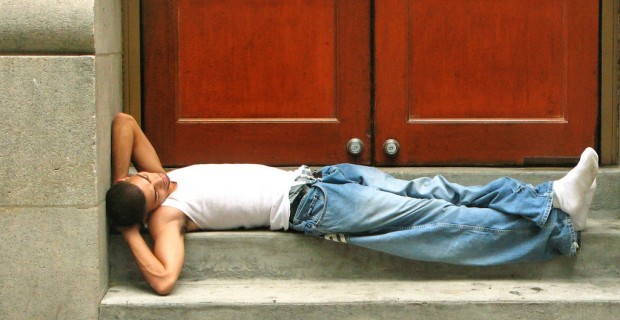
Sleep apnoea is a breathing related sleep disorder that sufferers can experience for years without ever being properly identified. The disorder has serious consequences if left untreated but is easily diagnosed by taking a sleep apnoea test.
What is Sleep Apnoea?
Apnoea is a Greek word meaning ‘without’. While a sleep apnoea sufferer sleeps, the soft tissues of the airways narrow and collapse; and breath and oxygen intake becomes interrupted for a brief period. Carbon dioxide builds up in the blood and oxygen stores become depleted.
This causes the body to gasp for breath in order to replenish the oxygen and the sleeping person is momentarily roused in order to breathe. The sufferer falls back to sleep and the cycle repeats itself again and again. The degree of severity of sleep apnoea is determined by measuring how many times per hour the breath ceases whilst sleeping.
From Symptoms to Diagnosis
The symptoms of sleep apnoea are general tiredness, irritability, fatigue and an inability to properly focus. Many suffers remain unaware of the cause of their fatigue or even of the fact that they snore or stop breathing while sleeping.
Often the partner of the sufferer first draws attention to the problem because their own sleep is interrupted and they notice the pause in their partner’s breathing. Sleep apnoea sufferers who live alone may go for years without realising the extent of the problem or the dangers involved.
What are the Dangers of Remaining Undiagnosed?
Those who suspect they may suffer from sleep apnoea should arrange to take a sleep apnoea test. Sleep-disordered breathing is closely linked to a range of detrimental health effects such as stroke, diabetes, high blood pressure, arrhythmia, cardiovascular disease and higher incidents of fatigue related car accidents.
Anyone suspected of suffering from sleep apnoea must be fully tested so a correct diagnosis can be obtained and various treatment options fully explored.
What Does a Sleep Apnoea Test Involve?
Sleep apnoea tests range in complexity but essentially monitor heart and breathing rates, body movements and also the level of oxygen in the blood. Some tests can be taken at home with mobile equipment. Other tests are administered in a specifically designed sleep laboratory with the sleeping patient connected to state-of-the-art equipment that is monitored by trained medical personnel.
Once the test has been done and the severity of the problem is known, the appropriate treatment can then be offered.
Treatment Options
Depending on the extent of the pauses in breathing, which are also known ‘events’, the patient will be rated on a scale of minimal (5 events per hour) to severe (30 events per hour).
Those patients diagnosed as severe may require assistance from a sleep apnea machine or CPAP machine in order to consistently breathe throughout the night. The sleep apnoea sufferer wears a mask connected to a compressor while they sleep. The mask covers the mouth and nose and forces a steady stream of air into the airways, holding them open and preventing them from collapsing and blocking the breath.
Dental Devices
Mandibular advancement splints are dental devices similar to mouth guards that keep the airways open by slightly changing the position of the jaw. Depending on the severity of the diagnosis, these devices are less invasive than a CPAP machine.
Regardless of the treatment intervention, it is important to know that sleep apnoea is a serious condition that has profoundly negative consequences when left untreated. Taking a sleep apnoea test is the first step in addressing the harms that an undiagnosed condition can cause
Image by Torbakhopper via Flickr




